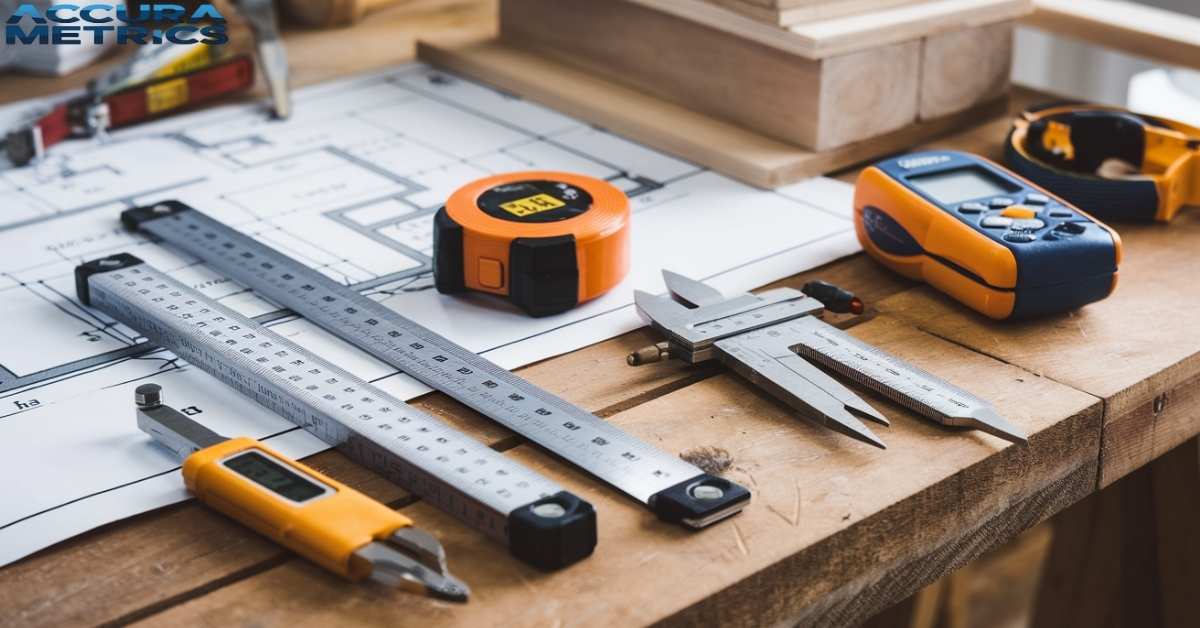Navigating between length measurements systems does not have to give you a headache. Whether you are tackling a DIY project, planning international travel, or just trying to understand product dimensions while shopping online, this comprehensive guide will make length conversion a breeze.
Why length Measurements Matters
Have you ever purchased furniture only to find it could not fit in the house because of the door? How about ordering materials like fabrics, and the one you purchased online was of an incorrect length? These are actual situations in everyday life caused by confusion in measurement systems.
In the modern society we live in today, knowing how to change from centimeters to inches is not an added advantage, but a necessity.
Metric vs Imperial length measurements
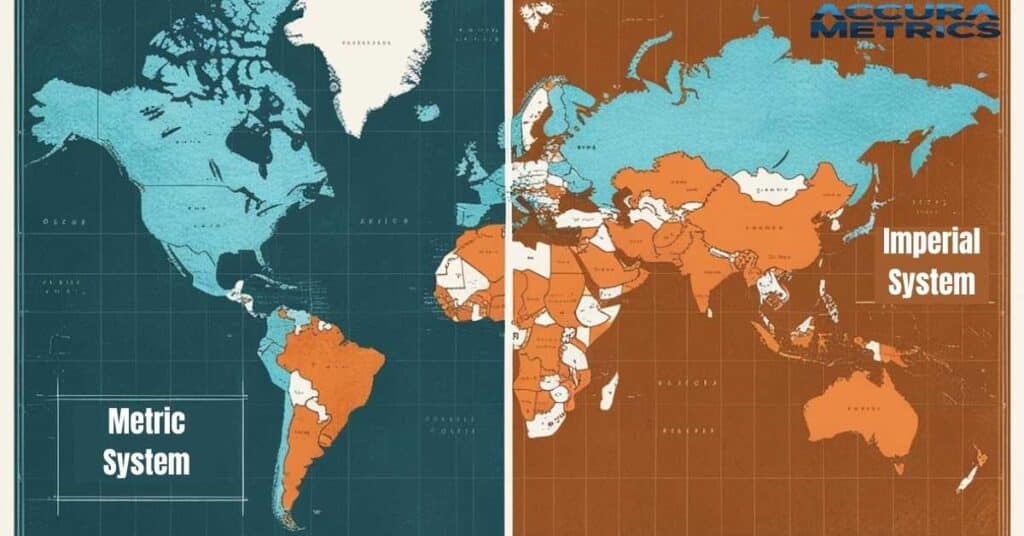
This section explores the key differences between the metric and imperial systems, highlighting their unique units, applications, and advantages in various contexts.
The Metric System (SI)
The metric system dominates almost the whole globe and here is the reason:
- Base unit: meter (m)
- Common fractions: millimeters (mm), centimeters (cm), kilometers (km)
- Convenient transformation: One just shifts the decimal point.
In use in more than 190 nations around the world the metric system is a good demonstration of how structure and standardization can make things easier. It is based on the powers of ten and thus simple conversions translate to simple tasks of moving the decimal point.
The Imperial System
While the majority of the world uses the metric system, the United States still relies on the imperial system of length measurements:
- Main units: inches, feet, yards, and miles.
- Common usage: The imperial system is primarily used in building construction, measuring distances between locations, and determining the height of people or objects.
- Cultural significance: The imperial system has been ingrained in American culture for decades, shaping industries and everyday life, making it familiar and accessible to many.
America’s Measuring Stick
Even though the majority of the world is now on the metric system, the Unites States still relies on the imperial system of measurements:
- The main units of measurements include: Inches, feet, yards and miles
- Usage: Building construction, measuring distances between roads, and determining the height of objects or individuals.
- Sociological aspect: has been a part of the American way of life and created industries for decades.
Read More “New York Cricket Stadium: Guide to Dimensions and Features”
Essential Conversion Chart
A handy conversion chart provides quick reference for translating between metric and imperial units to simplify everyday calculations.
| Metric | Imperial | Approximate Conversion |
| 1 cm | 0.394 inches | About 2/5 inch |
| 1 meter | 3.28 feet | Just over 3 feet |
| 1 km | 0.62 miles | About 5/8 mile |
| 2.54 cm | 1 inch | Exact conversion |
| 0.914 meters | 1 yard | Standard conversion |
Quick Length Measurement Conversion Tips
Simple mental conversion tricks make it easy to estimate measurements without the need for a calculator.
Want to convert measurements in your head? Here are some conversion tricks:
| Conversion Type | Quick Method | Example |
|---|---|---|
| Meters to Feet | Multiply by 3 and add 10% | 10 meters ≈ 33 feet |
| Kilometers to Miles | Multiply by 0.6 | 5 km ≈ 3 miles |
| Inches to Centimeters | Multiply by 2.5 | 4 inches ≈ 10 cm |
| Centimeters to Inches | Divide by 2.5 | 10 cm ≈ 4 inches |
| Millimeters to Inches | Divide by 25 | 50 mm ≈ 2 inches |
| Feet to Meters | Divide by 3 and subtract 10% | 33 feet ≈ 9.9 meters |
| Miles to Kilometers | Multiply by 1.6 | 3 miles ≈ 4.8 km |
| Yards to Meters | Multiply by 0.9 | 10 yards ≈ 9 meters |
Length Measurement in Industry Specific Applications
Different industries utilize measurement systems in unique ways, affecting everything from construction to interior design.
Read More “Clothing Measurements: How to Measure Your Size for Clothing”
Construction and DIY Projects
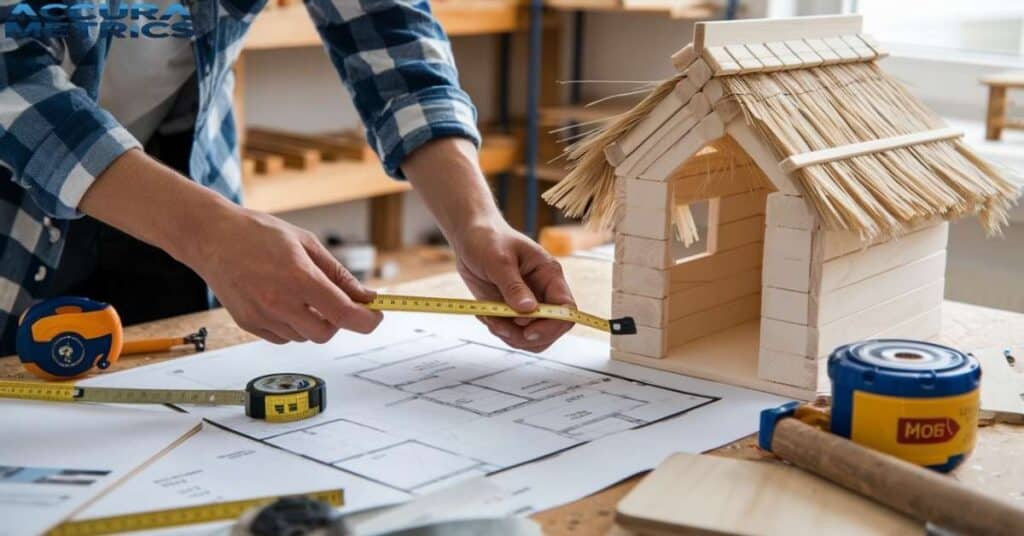
When working on home improvements, length measurement accuracy is crucial:
- Use metric for precision work (cabinetry, detailed woodworking)
- Stick to imperial for standard US construction materials
- Always double-check measurements before cutting
Interior Design and Architecture
Professional designers often work with both systems:
- Room dimensions typically use feet and inches in the US
- Furniture specifications might come in metric from international suppliers
- CAD software often allows switching between systems
Fitness and Sports
Different sports use different measurement standards:
- Track and field: metric (100m dash, 400m track)
- American football: yards
- Swimming: meters internationally, yards in US competitions
Digital Tools for Perfect Conversions
Modern apps and websites offer convenient tools for accurate length conversions at your fingertips.
Recommended Apps and Websites
These tools make length conversion effortless:
- Mobile Apps
- Convert Units (iOS/Android)
- Unit Converter Pro
- Measure (built into newer smartphones)
Read Further Our Article “How Big is Chicago? Explore the City’s Dimensions and Charm”
Length Measurements Mistakes and Fixes
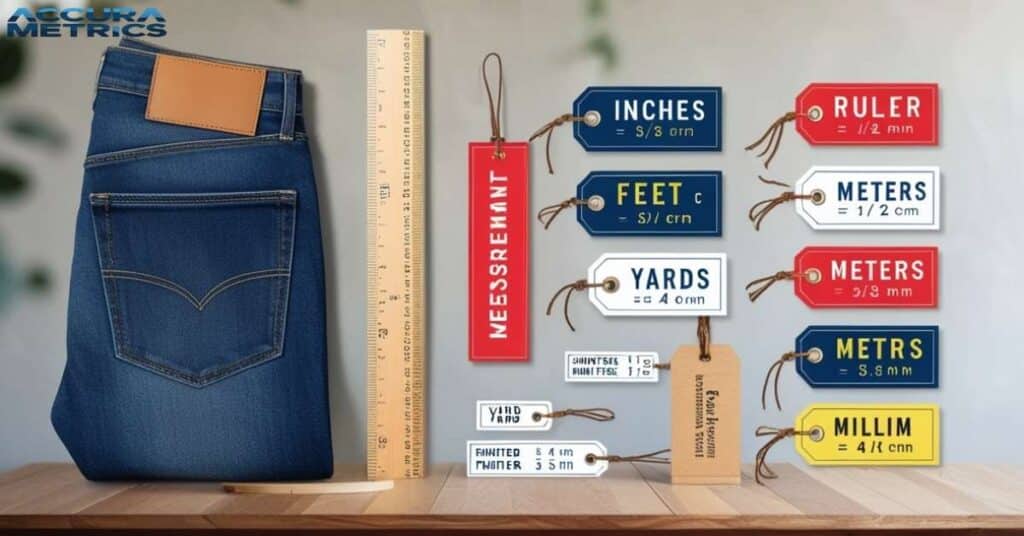
Identifying and avoiding common measurement errors can prevent costly mistakes and ensure accuracy in various projects.
Avoid These Common Pitfalls
- Mixing Systems
- Always note which system you are using
- Write down units clearly
- Use consistent measurements throughout projects
- Rounding Errors
- Keep at least one decimal place for accuracy
- Round only at the final step
- Use exact conversions for precise work
- Scale Interpretation
- Verify scale on drawings and plans
- Double-check digital vs physical measurements
- Consider margin of error in measurements
The Future of length Measurements Systems
Emerging technologies and global trends are shaping the future of measurement systems, with a shift towards greater standardization.
Global Trends and Technology
The future of measurement systems is evolving:
- Increasing global standardization toward metric
- Digital measurement tools becoming more precise
- AR and VR applications for virtual measuring
- Smart devices incorporating multiple measurement capabilities
Quick Reference Guide for Daily Use
This guide provides essential conversions and practical applications for quick and easy reference in everyday scenarios.
Most Common Conversions
Keep these handy for everyday use:
Length Conversions:
- 1 foot = 30.48 centimeters
- 1 meter = 39.37 inches
- 1 mile = 1.609 kilometers
Practical Applications:
- Door height (US): 6’8″ (203 cm)
- Counter height: 36″ (91.44 cm)
- Ceiling height: 8′ (2.44 m)
Read Further About “What Are the Typical Dimensions of a Flower Bouquet?”
Non Standard Units of Length Measurements
Non standard units of length measurements lack universally fixed values, leading to variability based on individual characteristics and objects. For example, when a child and an adult measure a painting with their hands, the results will differ because of the child’s smaller hand span compared to the adult’s.
Some common non standard units of measurement include hand spans, foot spans, finger widths, threads, and ropes.
Hand Span
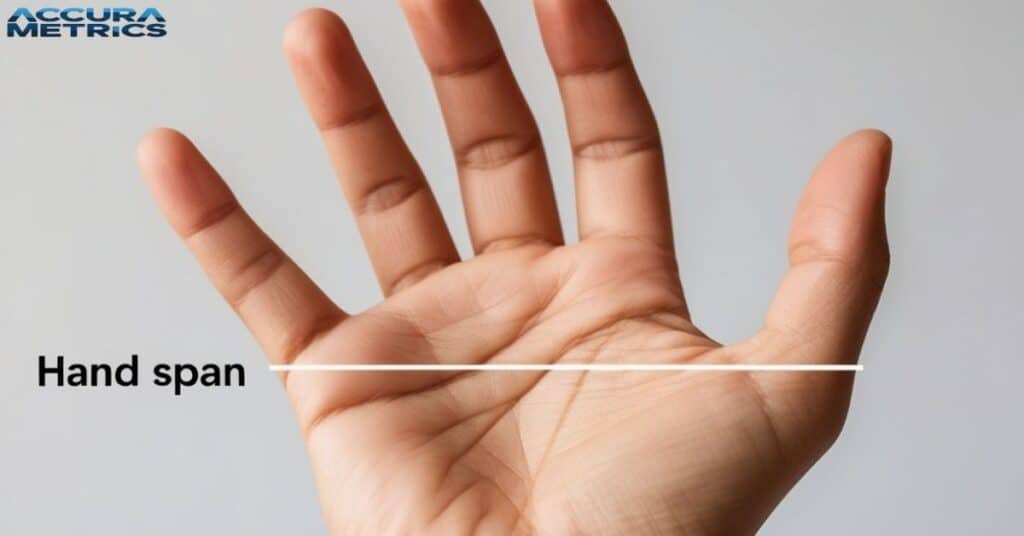
A hand span measures the distance from the tip of the thumb to the tip of the little finger, typically around 8 inches. However, this measurement can vary significantly based on individual hand size.
Fun Fact: The term “hand” is still used today to measure the height of horses, a tradition originating from Old English customs!
Foot Span
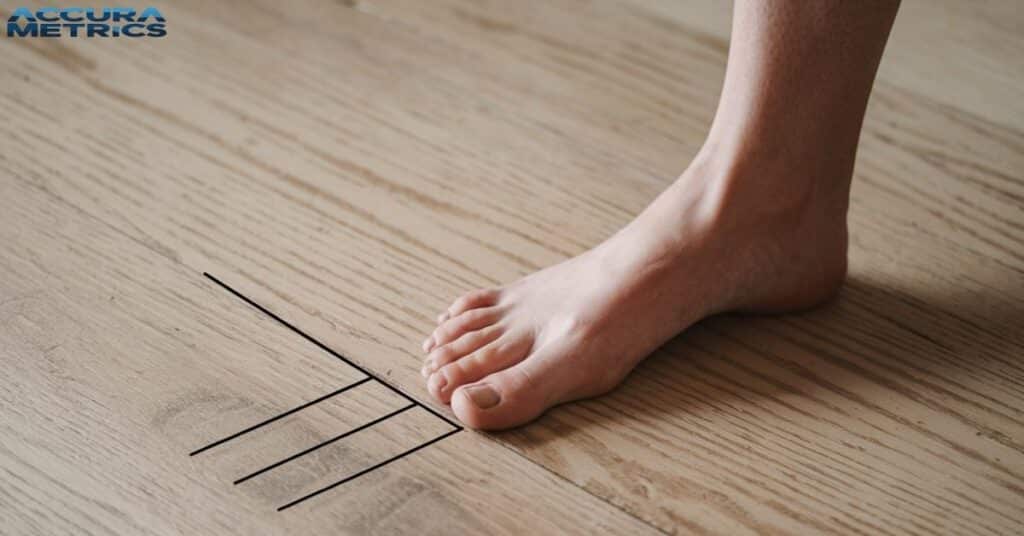
Foot span refers to the distance from the toe to the heel of the foot. This measurement can be useful for various tasks, such as estimating the size of objects in relation to one’s foot size.
Fun Fact: Many ancient cultures, including the Romans, used foot length as a standard measurement. The modern “foot” measurement is even said to be inspired by the average size of a Roman foot.
Final Tips for Length Measurements Success
- Always write down measurements with their units
- Keep a conversion chart handy for reference
- Use digital tools for complex conversions
- Double check critical measurements
- Consider the required precision for your project
By understanding both metric and imperial systems, you will navigate length measurements confidently. Whether you are building, buying, or traveling, these skills will serve you well in our increasingly connected world.
FAQs: Length Measurements
What is the quickest way to convert inches to centimeters?
Just multiply inches by 2.54. So if you have got a 5 inch object, that is 12.7 centimeters (5 × 2.54 = 12.7 cm). Easy.
Why does the US still use the imperial system when most countries use metric?
The US had planned to switch to metric in the 1970s but faced resistance due to high industrial conversion costs. Manufacturing standards, construction practices, and road systems were already established using imperial measurements.
Which length measurement system do American scientists use?
Scientists in the US typically use the metric system because it is the standard for international scientific communication and makes calculations much simpler.
What is the fastest way to estimate meters to feet?
Multiply the number of meters by 3 and add 10%. For example: 10 meters = (10 × 3) + 1 = 31 feet (actual is 32.8 feet, so this quick method is pretty close)
How accurate are smartphone measuring apps?
Modern smartphone measuring apps using AR technology are typically accurate within 1-2% for distances under 10 feet/3 meters, making them reliable for casual measurements but not precise enough for professional work.
Read Further “How Big is New York City? Dimensions and Population Over Time”
Conclusion: Length Measurements
Let us wrap this up with some key takeaways that will make your length measurement conversions a breeze.
What You have Learned
In this comprehensive guide, we have covered everything from basic length conversions to professional applications. You now understand:
- The fundamental differences between metric and imperial systems
- Quick conversion tricks for everyday use
- Professional tools and digital resources
- How to avoid common measurement mistakes
Practical Applications of Length Measurements
Remember, mastering measurement units isn not just about knowing the numbers it is about practical application. Whether you are:
- Planning home renovations
- Shopping internationally
- Working on DIY projects
- Traveling abroad
Final Thought: Mastering length measurements
While the debate between metric and imperial systems continues, what matters most is your ability to work effectively with both. Stay curious, keep practicing, and remember whether you are measuring in inches or centimeters, accuracy and understanding are what count.
Check it Out Our Article “How Big is 2 Inches? 15 Everyday Items for Comparison”

My name is Linda, and I am an experienced blogger with a passion for precision and craftsmanship. With years of expertise, I contribute to Accura Matrics, bringing a wealth of knowledge and a keen eye for detail. My insightful articles and expert tips are designed to help readers achieve excellence in their measurements and dimensions projects, offering valuable guidance in the pursuit of accurate and thoughtful design.

